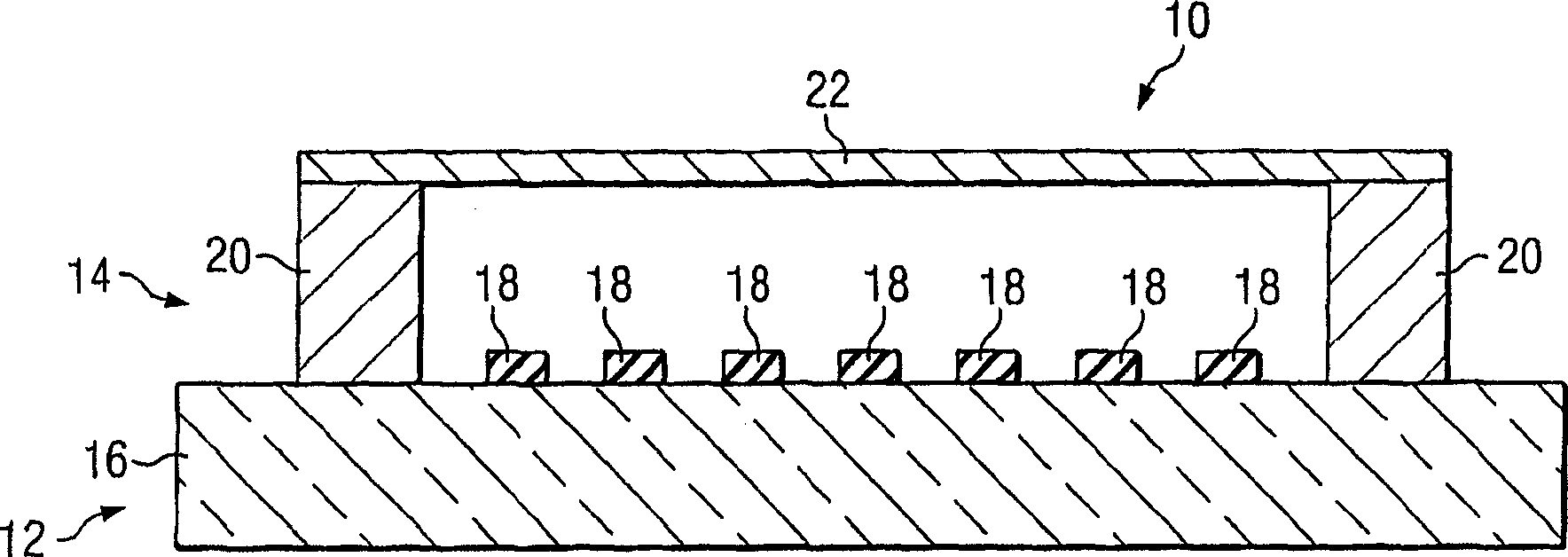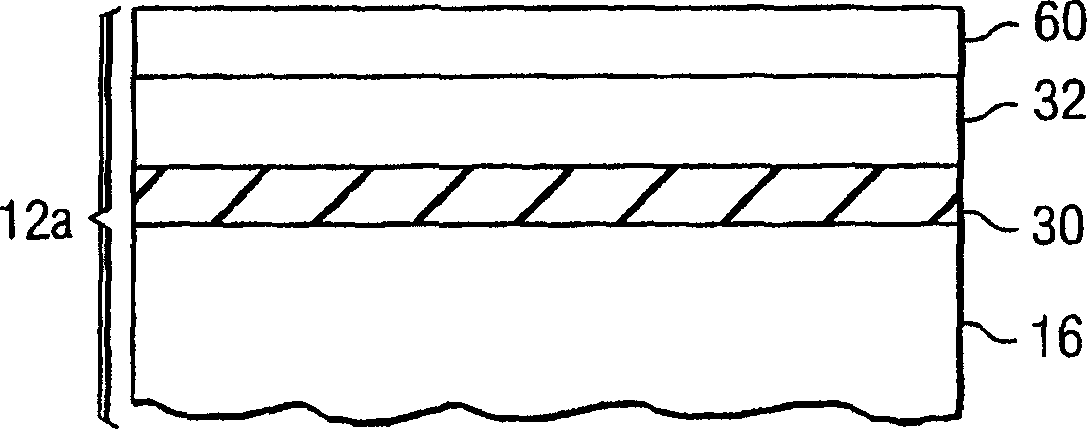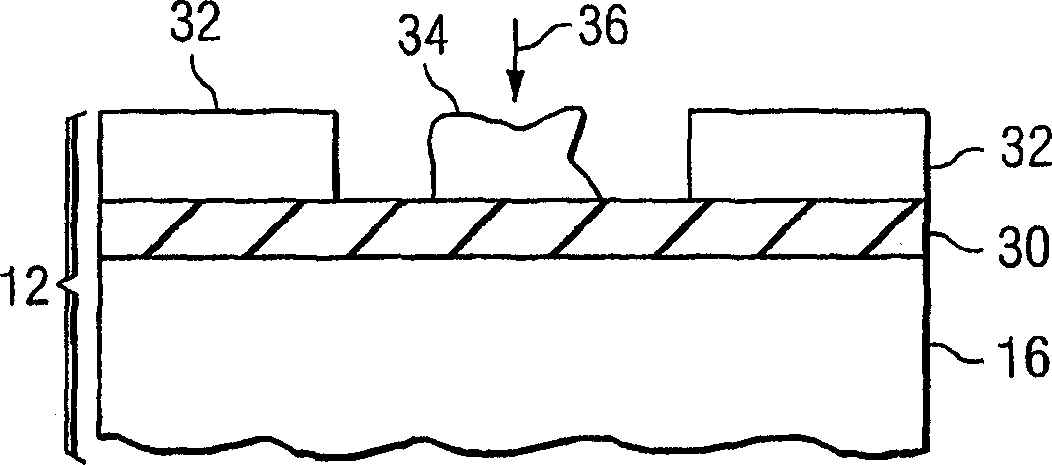Photomask and method for repairing defects
A defect and photomask technology, applied in the field of photolithography, can solve the problems of reducing the transmission characteristics of photomasks, and achieve the effect of reducing risks and damages
- Summary
- Abstract
- Description
- Claims
- Application Information
AI Technical Summary
Problems solved by technology
Method used
Image
Examples
Embodiment Construction
[0021] refer to Figures 1 to 3B To understand the preferred embodiment of the invention and its advantages, like reference numerals are used to designate like and corresponding parts.
[0022] figure 1 A cross-sectional view of a photomask assembly 10 having a photomask 12 coupled to a pellicle assembly 14 is illustrated. Substrate 16 and patterned layer 18 cooperate with each other to form photomask 12, unlike known masks or reticles. Photomask 12 may have a variety of sizes and shapes including, but not limited to, circular, rectangular, or square. Photomask 12 may also be any of a variety of photomask types including, but not limited to, a one-time master, a five-inch reticle, a six-inch reticle, a nine-inch reticle, or any other An appropriately sized reticle, the photomask described above can be used to project an image of the circuit pattern onto a semiconductor wafer (not explicitly shown). Photomask 12 may also be a binary mask, a phase shift mask, an optical prox...
PUM
 Login to View More
Login to View More Abstract
Description
Claims
Application Information
 Login to View More
Login to View More - R&D
- Intellectual Property
- Life Sciences
- Materials
- Tech Scout
- Unparalleled Data Quality
- Higher Quality Content
- 60% Fewer Hallucinations
Browse by: Latest US Patents, China's latest patents, Technical Efficacy Thesaurus, Application Domain, Technology Topic, Popular Technical Reports.
© 2025 PatSnap. All rights reserved.Legal|Privacy policy|Modern Slavery Act Transparency Statement|Sitemap|About US| Contact US: help@patsnap.com



